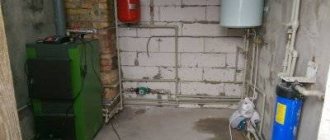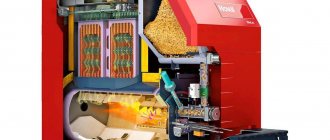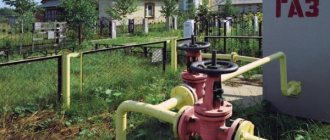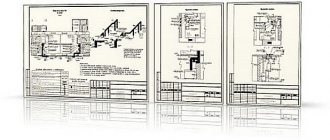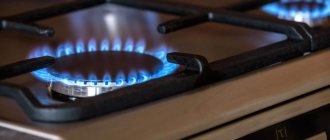If you, colleagues, are choosing a diesel heating boiler for a private home, fuel consumption for you is the most important value in the characteristics of your heat generator.
Why? Because at the prices for diesel fuel that we are seeing now, the cost of the unit itself cannot be compared with the cost of the fuel itself.
How much diesel fuel do heating boilers for a private home using diesel fuel actually consume? How can you reduce diesel consumption for heating?
In fact, this is what we’ll talk about today. See all my conclusions below.
Certified and actual fuel consumption of a diesel boiler
So, you have decided to install a boiler for heating a private house using diesel fuel and, for starters, you want to find out how much diesel fuel it will consume.
Why you decided to use a heat generator using diesel fuel is absolutely unimportant to us now. It is much more important to understand how many of your own hard-earned rubles you will pay for heating your home.
Each manufacturer of heating equipment indicates in the characteristics of their products how much fuel they consume over a certain period of time.
If we take heating boilers using gas and diesel fuel, then it is customary to indicate their consumption in liters, kilograms or cubic meters per hour.
As a result, we look at the passport and see for boilers using main gas - m3 per hour, for liquefied gas - kg per hour, and for diesel fuel - liters or kg per hour.
Why do we have both liters and kilograms for diesel boilers? Because. If you buy diesel fuel at a gas station, they will charge you according to the volume. And if you buy diesel fuel from a wholesale company, they will give you 1-2-3 tons, that is, they will measure it by weight.
Diesel fuel is lighter than water, which means that in 1 liter of diesel fuel you will get less than 1 kilogram. Be careful.
Ok, let's move on. We look at different indicators of the power of liquid fuel boilers and their consumption.
It turns out that the manufacturer claims the boiler’s diesel fuel consumption is approximately 0.08 kg (that’s about 100 ml) of diesel fuel per 1 kW per hour.
That is, a 20 kW boiler consumes 2 liters or 1.6 kg of diesel fuel per hour.
At a wholesale price of 35,000 rubles for 1 ton of diesel fuel, we find that in an hour your boiler will “eat” approximately 3 rubles per kilowatt and at the same time heat approximately 10 square meters of the area of your well-insulated house.
Multiply 3 rubles by the power of your boiler in kilowatts and get the cost of operating your boiler per hour.
Flaws
Now let’s look at the points that hold back buyers in their desire to purchase a diesel heating device:
- In the first place is the high price of fuel material. This makes using the equipment expensive. It is justified only by the absence of a gas pipeline near the land plot. Connecting gas communications from afar will be an even more expensive undertaking.
- Diesel fuel contains impurities that clog the nozzle and reduce pump performance. In this case, the installed cleaning filters quickly become clogged with paraffin. Without timely maintenance, the boiler will not operate at its full possible capacity with the same amount of fuel.
- The need for specially equipped fuel storage.
- The need for stable power supply. If situations with power outages are expected, it is better to acquire a stabilizer.
- Strong smell and noise require the installation of a separate isolated room or building.
- Thickening of the heating material under the influence of temperatures below +5⁰ C, which forces the pump to work in increased mode.
Diesel fuel consumption by the boiler per day and per month
The picture seems to be bleak. A 20 kW boiler consumes almost 60 rubles of your hard-earned money per hour.
However, the heat generator does not work all the time. Under different weather conditions, the boiler automation, which is configured to maintain the temperature of the coolant in CO or the air temperature in the rooms, will stop the supply of diesel fuel to the burner.
And then resume again, if necessary. The so-called boiler clocking will occur - operation in start-stop mode.
The warmer it is outside, the more often the heat generator will clock, and the colder it is, the less often the fuel supply to the burner will stop.
In the most severe frosts, your diesel fuel boiler can operate continuously. And right at this moment, in order to find out the diesel fuel consumption, you will need to multiply the hourly consumption by 24 hours.
On any other days, it is necessary to take into account breaks in the operation of the unit and make allowances for the outside air temperature.
As a result, it is possible to display the average consumption for each boiler per season, as shown in the example of the Korean Kiturami boilers in the table below.
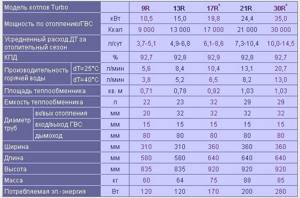
Features of diesel heating operation
The popularity of diesel heating is easily explained by the advantages it has:
- automatic operation - the boiler turns off when the set temperature is reached and turns on when the temperature drops below a certain point;
- high efficiency - up to 90% or more;
- complete autonomy - there is no need to be connected to external sources such as main gas or electricity;
- universal availability - diesel fuel can be purchased anywhere in the country;
- high uniformity of microclimatic conditions created at home.
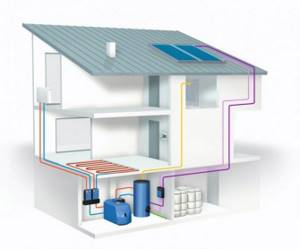
How to reduce diesel consumption for home heating
When I once chose a diesel boiler for heating a private house, fuel consumption was not particularly important to me, since then it was possible to buy diesel fuel at a price of 13,000 rubles per ton.
But very quickly the cost of diesel fuel was raised to the cost of gasoline, and now it costs more than 95 gasoline.
As a result, I had to think about how to reduce the consumption of diesel fuel for heating the house.
Firstly, I started heating the house more with a wood boiler during the day when I could afford it. The TT boiler stood in parallel with the DT, and thus the diesel fuel consumption became noticeably lower.
Secondly, I began to “look for fleas” in the insulation of my home. And there were a lot of them. When you have cheap fuel, you don't think about it.
But when heating becomes prohibitively expensive, you begin to look differently at the cracks in the windows, at the unused heat from the warm air removed through the ventilation, and at the blowing of the entrance doors.
As a result, the windows in the house were replaced, a recuperator was installed and an external vestibule was built to the entrance doors.
I now look at my fuel consumption after these events and see that I managed to reduce my diesel fuel consumption by almost 2 times.
More on this topic on our website:
- Wood-burning boiler for heating a house with batteries If you decide to use a wood-burning boiler for heating a private house with batteries, then you should know some of the nuances typical for…
- Electric boiler for heating a house of 100 m2 - reviews and choice Well, what do we have for analysis today? Let's see which electric boiler to choose for heating a private house of 100 m2, reviews on...
- Electric boilers for heating a home - reviews and electricity consumption So, colleagues, today we are looking at what reviews there are on electric boilers for heating a private home. Electricity consumption and how...
- The most economical gas boiler for heating a house See with us what is the most economical gas boiler for heating a private house in all respects. Choose the options that...
Advantages
Let's start right away by considering the winning aspects (we'll discuss those that aren't so good later) that characterize heating a country house with diesel fuel. This question is relevant for many owners of private housing, because diesel fuel is not cheap; frankly speaking, a lot of it is required for the heating season.
The rating of this equipment in European countries is quite high, thanks to its advantages. Let's list the main ones.
The efficiency of the equipment under discussion is high, reaching 95% under the following conditions:
- correct installation of the boiler;
- furnace installations in accordance with all rules and regulations;
- high-quality insulation of the house;
- installation of double-glazed windows;
- proper storage of fuel reserves;
- using high-quality fuel;
- timely maintenance;
- competent choice of equipment power, manufacturer, model.
The efficiency can reach up to 98% when using a condensing type boiler, but more on that later.
- Wide range of model range, manufacturers, power characteristics, etc.
- Economical consumption of electrical energy.
- Environmental friendliness, which is a fairly current trend in modern European society. When burned, almost no harmful substances or gases are formed.
- High level of safety compared to gas boilers.
- Autonomous, automatic operation that does not require constant human intervention.
- Inertia is not typical for the design of diesel boilers (unlike solid fuel analogues). Productivity decreases immediately.
- Liquid fuel takes up much less storage space than solid fuel (peat, firewood, coal).
- Possibility to use used engine oils, which are cheaper. At the same time, the issue of recycling waste material, which is completely burned in a diesel unit, is resolved. Again, a reference to environmental friendliness.
Don't miss: How to make a heated floor in a bathhouse: detailed instructions with installation diagrams
Calculation of heating radiators
Each room will need a heating radiator. Its size is determined at the rate of 100 W per 1 m2 of room area.
Since different types of radiators differ noticeably in power, we will select them when purchasing, but to get our bearings in advance, let’s estimate:
A “classic” cast iron radiator has a heat output of one section of approximately 150 W, that is, for a room three by five meters, you will need a radiator of - 15 m2 (we take into account not the boiler power, but the heat consumption for heating the building) 100 W: 150 W/ section = 10 sections.
For aluminum with its output of 200 W, 7.5 sections will be required. Rounding up, we get 8.
Rules for storing diesel fuel in a cottage
Purchasing diesel fuel in bulk for heating cottages will be a more profitable and correct solution for the owners of the premises, provided that it is properly stored - in containers made of steel or plastic with a double bottom.

Plastic containers with a double bottom for storing diesel fuel in the cottage
Diesel fuel is a flammable liquid, so it is necessary to follow fire safety rules - an important condition for diesel heating of cottages and country houses. The first step is to select a fuel storage tank.
Tanks for diesel fuel are made of plastic, fiberglass and metal, with a volume of 500 liters or more. They are divided into round and rectangular in shape. Keeping in mind that large plastic containers will not be able to withstand internal pressure, they are placed in a special lattice metal container.
The location for storing the tank is selected according to two conditions:
- so that it is located near the boiler room,
- so that the refueling vehicle can drive up to the tank.
How is diesel fuel stored at the dacha?
DT is a relatively aggressive liquid in its properties. For its storage and transportation, you need to use only high-quality and, most importantly, containers that correspond specifically to this type of fuel. According to SNiP rules, diesel fuel can be stored in both plastic and metal containers. Diesel fuel should be stored in an airtight container to prevent the entry of oxygen from the air to prevent oxidation. This way the fuel is stored longer. It is advisable to store fuel in steel tanks with double walls and a climate control system. The price of such containers is not cheap. You can use steel canisters with tight lids.
ATTENTION! It is not recommended to store fuel containers on rooftop boiler rooms or in basements.
How much diesel fuel is required to heat a cottage?
Diesel fuel consumption depends on the ambient temperature, the area of the house and the power of the boiler. A boiler with a power of 5–12 kW spends heating an area of 100 square meters. m approximately more than 3 kg/h of fuel. At -20˚C, the volume of fuel consumed is 16 l/h. For the most economical mode of operation, it is necessary to equip the device with automation and additional thermal insulation of the house.
Diesel fuel consumption
One of the main criteria for choosing a diesel boiler is the amount of fuel it consumes. The key variables that should be taken into account when consuming diesel fuel are the square footage of the heated space and the level of thermal insulation.
The exact volume will be influenced by a number of factors, including:
- external temperature;
- ceiling height;
- How efficient is the heating system;
- how often does the boiler turn on during the cold months;
- number of windows.

